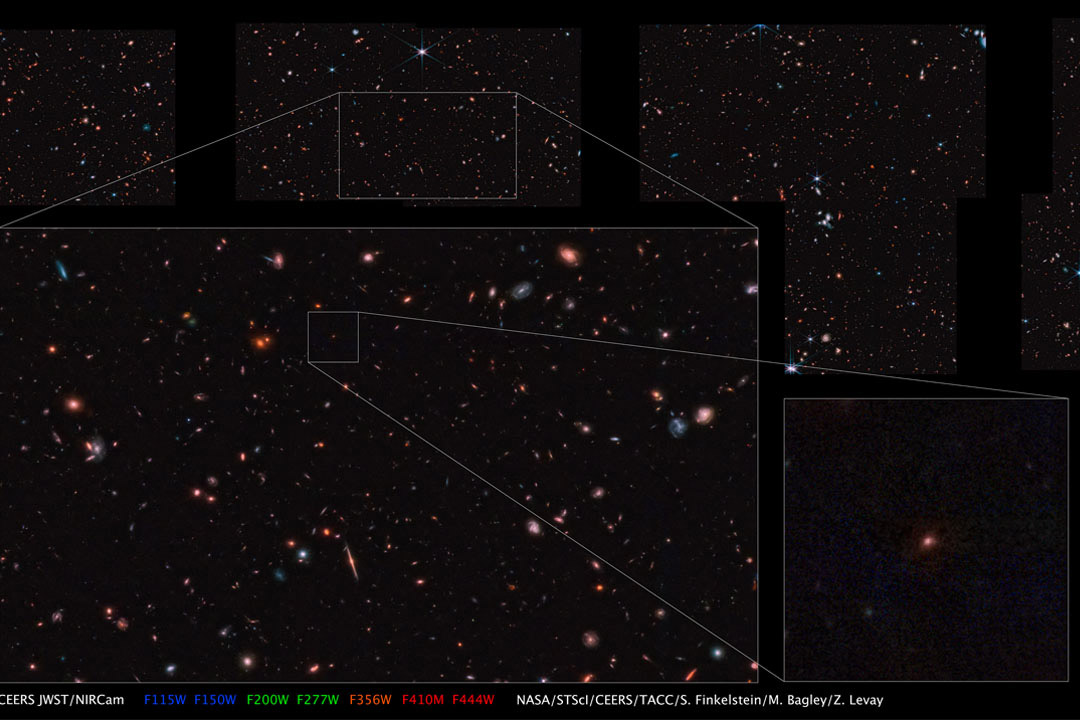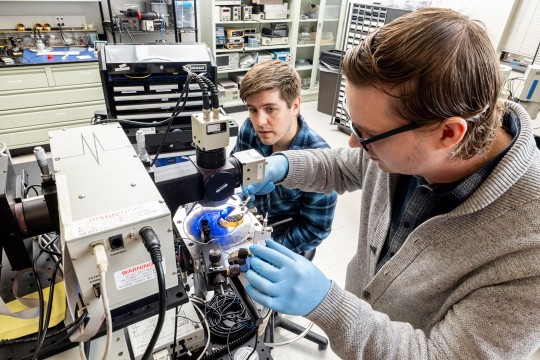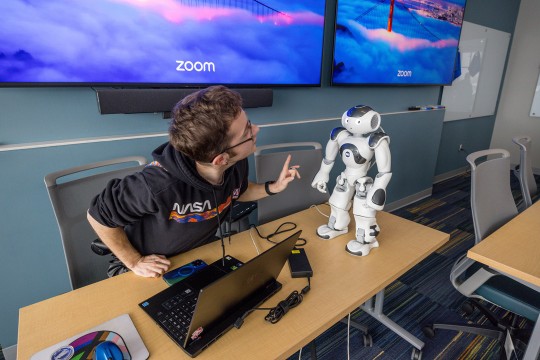Collaboration with global team confirms, disproves distant galaxies
Jeyhan Kartaltepe and Rebecca Larson co-authored paper published in ‘Nature’ journal
NASA/JWST
An image captured from the James Webb Space Telescope shows Maisie’s Galaxy, discovered by the CEERS team.
Rochester Institute of Technology scientists have once again used data from the James Webb Space Telescope (JWST) as part of the Cosmic Evolution Early Release Science (CEERS) Survey to change the way we think about the universe and its distant galaxies.
Jeyhan Kartaltepe, associate professor in the School of Physics and Astronomy, and Rebecca Larson, postdoctoral research associate, co-authored a paper, “Confirmation and refutation of very luminous galaxies in the early Universe,” published in Nature confirming very bright galaxies in the early universe, while also disproving the identification of what would have been the most distant galaxy ever found.
Kartaltepe and Larson, along with co-authors from around the world, studied the redshift (or displacement of the spectrum of an object toward longer, red wavelengths) of several specific galaxies to see how much the light shifted, which indicates how far away the galaxies are. The CEERS team focused on Maisie’s Galaxy, which was theorized to have a redshift of z ≈ 11.5, while a team in Scotland researched a nearby galaxy that they believed could have a redshift of z ≈ 16, far larger than any ever found before.
To examine further, the two teams partnered on a proposal to receive follow-up spectroscopy. When the new data came in, the teams were able to precisely measure the redshifts of both of these candidates, along with a few others.
“Spectra are how you really confirm what a galaxy’s redshift is,” explained Kartaltepe. “For these two galaxies, the answer was very clear—the spectra look completely different. We confirmed that Maisie’s Galaxy is at the high redshift we thought it was.”
The group also found that because of a coincidence that mimicked the colors of a high redshift galaxy, the other galaxy is not at a redshift of z ≈ 16, but at a redshift of z ≈ 4.9. Both the initial and follow-up data from JWST turned the theories into discoveries.
“Not only did JWST find these galaxies we didn’t know about before, but then it confirmed the redshift for them,” said Larson. “This paper in particular speaks to the power of not only JWST finding galaxies in the really early universe but also confirming and characterizing them.”
The research and the paper would not have been possible without dedicated collaboration between the CEERS team and the team in Scotland. Instead of working separately on their individual galaxies and submitting separate proposals, the partnership allowed for the follow-up spectroscopy to be accepted, and the subsequent analysis to be conducted efficiently, leading to new information about the universe.
“It’s truly a testament to what people can do when they choose to work together,” said Larson. “It was a great experience and I’m really glad we got to work with the team in Scotland. It’s because we worked together that any of this happened.”
When researching the data from JWST, scientists aim to find the highest redshift galaxies, or the most distant galaxies. Finding galaxies in the very early universe was one of the goals for the JWST. These and other early discoveries have proven the success of the telescope, even this early in its existence.
“It shows us how powerful the telescope is and its ability to do the things it was built to do,” said Kartaltepe. “In some ways, it performs even better than we expected. We are already learning so much about the universe early on in JWST’s mission. I think going forward we’re going to be able to build large samples over larger areas and really be able to dig deeper into the physical characteristics of galaxies in the early universe.”
“We are really making exciting discoveries,” added Larson. “It’s truly just beginning.”
Flight to Maisie's Galaxy
This 3D visualization portrays about 5,000 galaxies within a small portion of the CEERS Survey. The video ends at Maisie’s Galaxy, which was the focus of RIT researchers.









